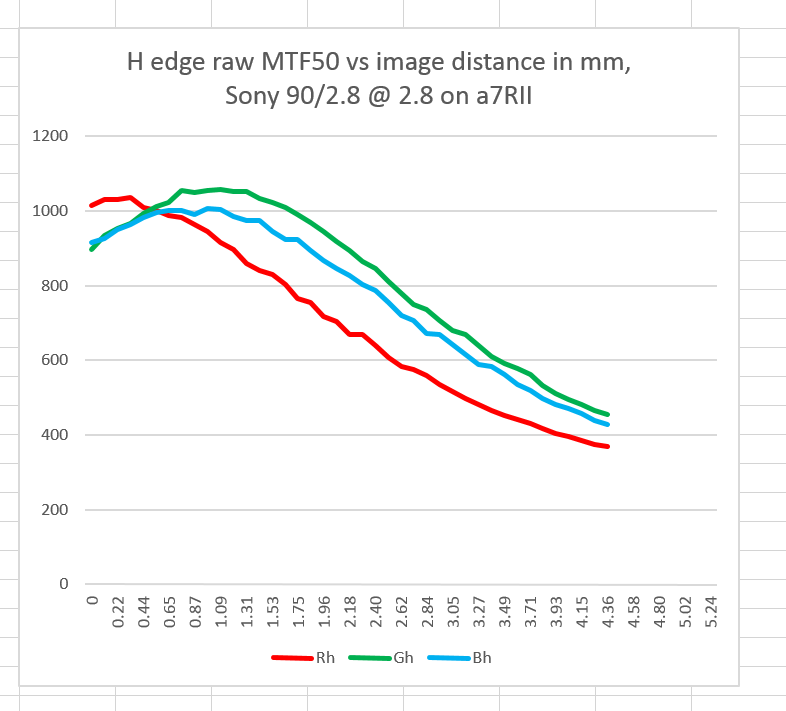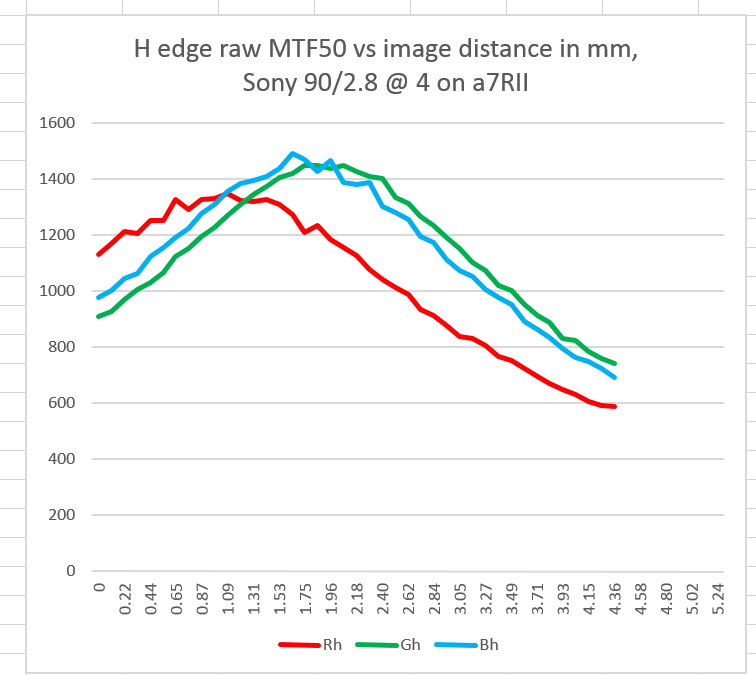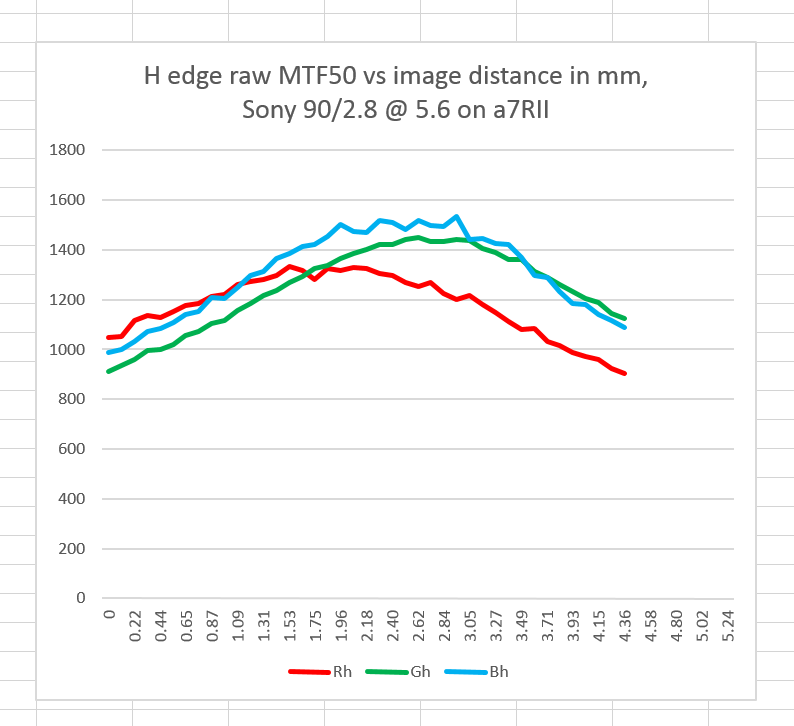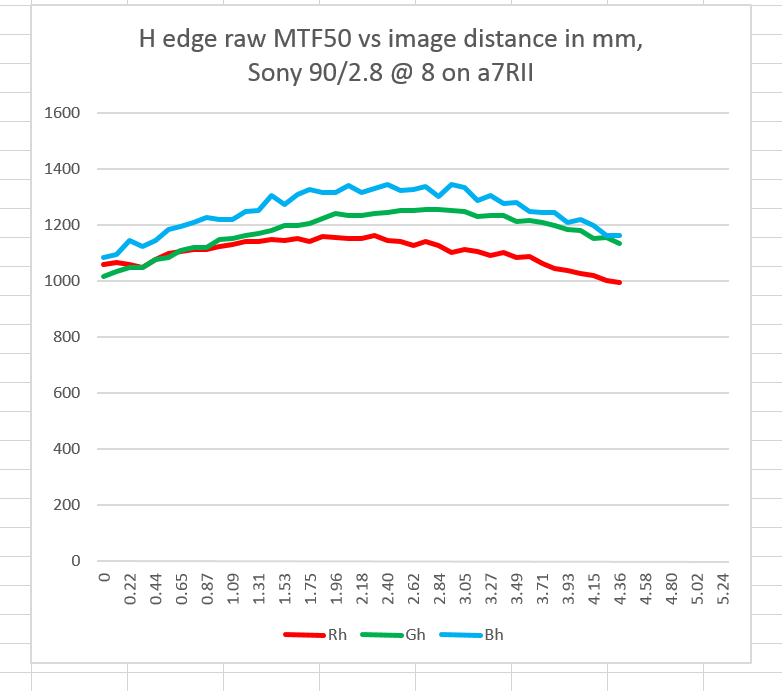This is a continuation of a test of the following lenses on the Sony a7RII:
- Zeiss 85mm f/1.8 Batis.
- Zeiss 85mm f/1.4 Otus.
- Leica 90mm f/2 Apo Summicron-M ASPH.
- AF-S Nikkor 85mm f/1.4 G.
- Sony 90mm f/2.8 FE Macro.
The test starts here.
Earlier today, I showed you the results of on-axis LoCA testing of the Otus and the Nikon 85mm lenses. Now I’ll present the results for the Sony 90/2,8 macro.
I lit the target with two Westcott LED panels, and set the color temperature to 5000K. I mounted a Sony a7RII to the Cognisys computer-driven focusing rail. I set the controller up to use 192mm of travel and make 49 exposures 4mm apart. I set the assembly 3.3 meters from the on-axis target, mounted the lenses in turn, focused about mid-rail using manual focusing , and exposed at 49-shot series from f/2 through f/8. I used Jack Hogan’s Matlab program, MTF Mapper, and DCRAW to pick the horizontal edges and calculate the MTF50s for the raw color planes, imported the data into Excel, and plotted the results in cycles per picture height vs image distance change.
f/2.8:
f/4:
f/5.6
f/8:
What ever problems this lens has, and it doesn’t have many, on-axis LoCA is no one of them.
Jim




Leave a Reply